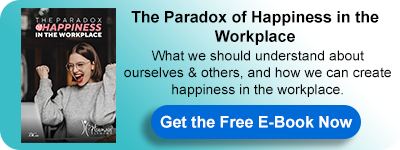Relationships in the Workplace
“The business of business is relationships; the business of life is human connection”
– Robin Sharma
It’s Dave’s birthday today. As he hits his 32nd birthday, he enters the office with his usual genuine smile. To his surprise, the place seems exceptionally quiet. The lights are dimmed. He scans the area with squinted eyes, trying to figure out what’s going on. As he looks back to the center of the office, he hears a squeal, followed by a loud noise, as colleagues jump from under their desks, throwing balloons. In comes Mary, carrying a giant birthday cake. Everyone is celebrating Dave’s birthday. Quite a happy day.
Relationships in the PERMA Model refer to feel supported, loved, and valued by others.
Creating positive relationships within the workplace works wonders. Employees come to work knowing they have best friends in the office. They move around feeling respected, valued, and appreciated. Having friends at work provides a supportive, non-judgmental environment.
This feeling of belonging is at the heart of human needs.
According to data:
- Employees with a high sense of belonging take 75% fewer sick days
- Employees who are not included or do not have a sense of belonging have a 50% higher rate of turnover
- Employees see a 56% in job performance when they feel like they belong
How then is it possible to have kindness, acceptance, and support all over the workplace?
On International Happiness Week, we will provide our answer through FIRO Theory: Fundamental Interpersonal Relations Orientation. A scientifically validated theory that demonstrates how individuals and teams function.
FIRO provides us with three dimensions: Inclusion, Control. And Openness
We will explore Openness and Inclusion now, while will keep the Control dimension on a different blog. Through Openness and Inclusion, we can build strong positive relationships, leading employees to happiness and elevating positivity in the workplace.
How is that? The answer simply lies in the hands of management.
Openness
Let’s first start by defining Openness according to FIRO:
“Openness is the degree to which I am willing to open up about myself to others. It is the depth of my interaction with them. How deep I am willing to go when expressing my feelings, thoughts, and beliefs”.
Let’s explore together some ways in which managers can learn on to create Openness among employees:
- Create an environment that promotes self-awareness and higher self-esteem.
- Grasp and create opportunities for people to know people, help them understand each other in terms of personalities, interests, and preferences
- Communicate clear expectations to employees. Empower them when handing a task with clear resources, expectations, and timelines
- Understand employee skills and strengths genuinely. Sincerely try to know what they are good at. Employees are much more motivated when their tasks or role matches their skills.
- Give praise and recognition whenever the opportunity comes up. Give feedback on tasks to help them improve. Offer credit and recognition for a job well done
- Listen to your employees’ feedback. It is of equal importance to receive feedback as well. Feedback helps you align your actions with employees’ needs.
- Ask employees for their ideas, thoughts, and feelings. Managers do not have all the answers. It is vital to draw on employees’ experiences and opinions as it helps them feel valued, heard, and trusted.
- Build employees’ skills through necessary learning, training, and development. Employees are the company’s most valuable asset. Managers need to equally focus on both development of their employees (soft skills) and the business side (hard skills) to build a successful business.
Now that we have covered the “Openness” dimension let’s focus on the “inclusion” one.
Inclusion
According to FIRO, inclusion behavior refers to people coming together, a sense of belonging, and togetherness. The need to be included presents itself as a desire to attend to, and draw attention and interest to oneself. A high level of inclusion in an organization helps a lot in terms of communication, teamwork, and therefore productivity. This leads us to say that it is imperative for organizations to work on inclusion, so as to cultivate positivity and cultivate a culture that breeds good relationships.
5 Ways to build inclusion in the workplace:
- Create a safe environment where employees feel good talking about themselves, what they like or dislike, and most importantly what are their preferences in terms of inclusion. Make sure they understand that the level of inclusion (high or low) is just a preference. Then make sure they understand the importance of flexibility in order to get tasks done.
- Promote diversity: a workspace that promotes diversity among different ethnicities, races, and religions is an inclusive culture. Workplaces that inhibit bullying, or racial jokes hardly can build a culture of high inclusion. Ensure you create a safe space for all the employees and have a zero-tolerance for those who do not respect differences.
- Encourage friends at work: Friendships at work help employees feel supported. They act as fishnets during adversity, assisting each other from falling into disappointment or depression. Moreover, it reduces the impact of exclusion in case it is happening. It is a sense of assurance that someone has got your back.
- Foster empathy: create incidents where people learn about their differences, understand them, respect them, and accept them.
- Promote self-acceptance: people who are aware and accept themselves are more likely to accept others.
For more about this topic, download our latest book ” The Paradox of Happiness in the Workplace “ for FREE:
0

